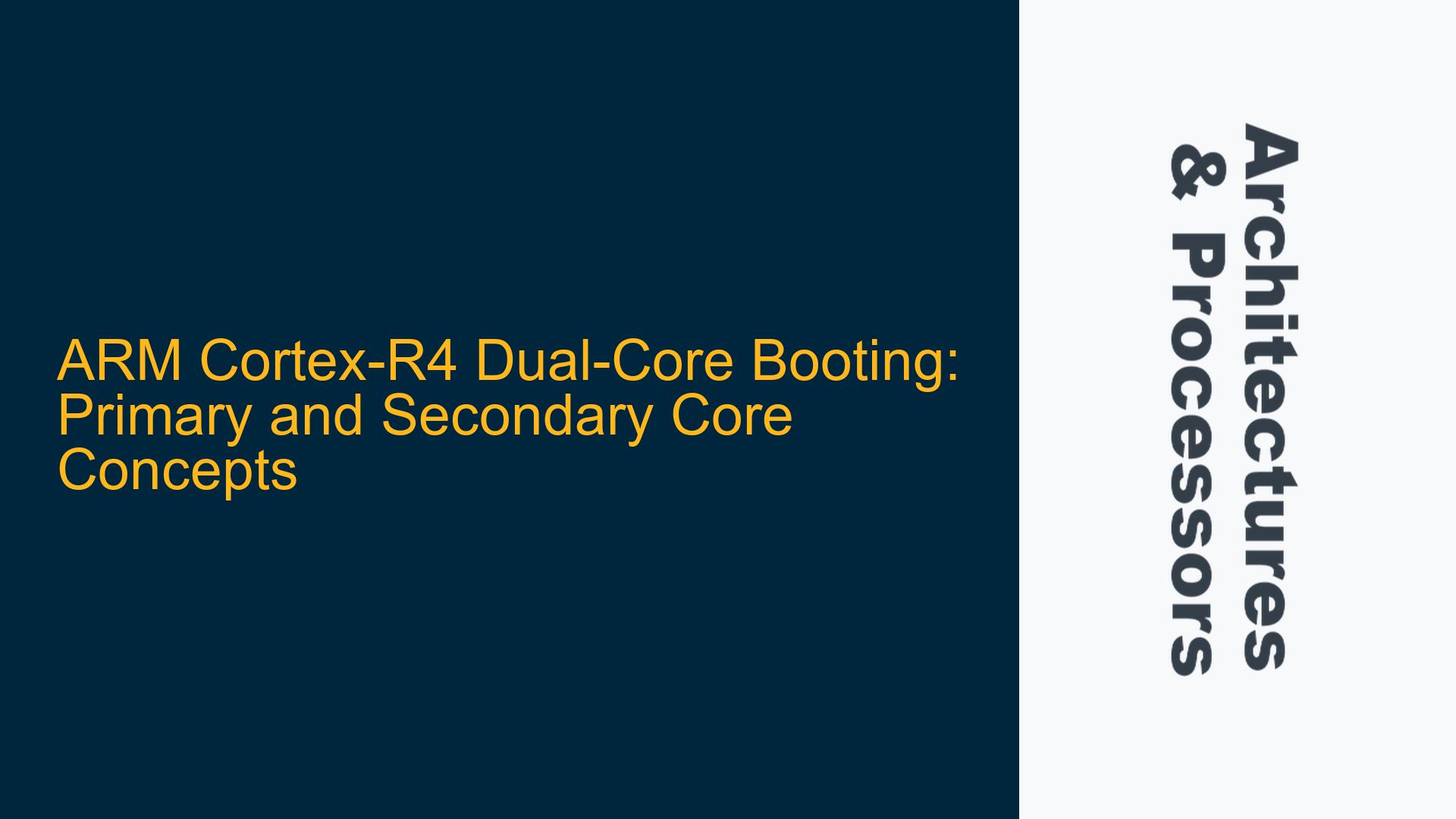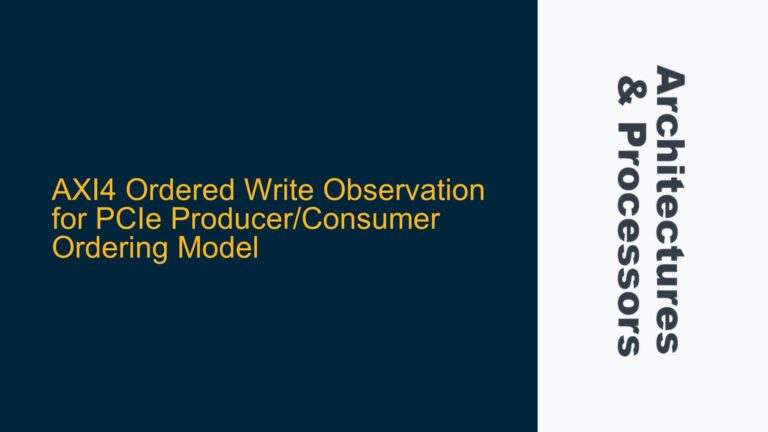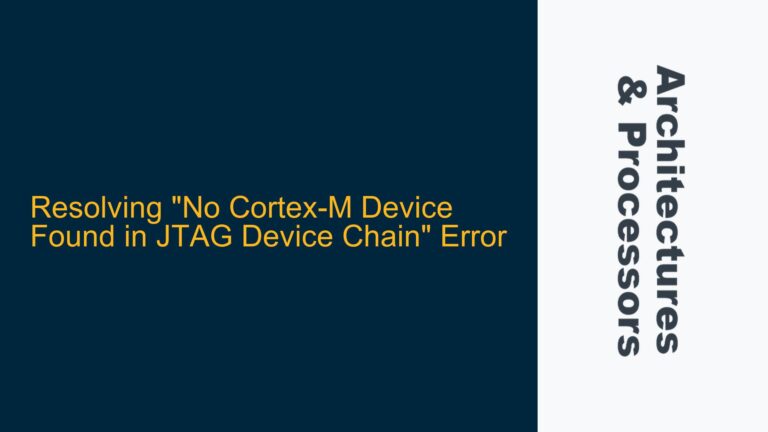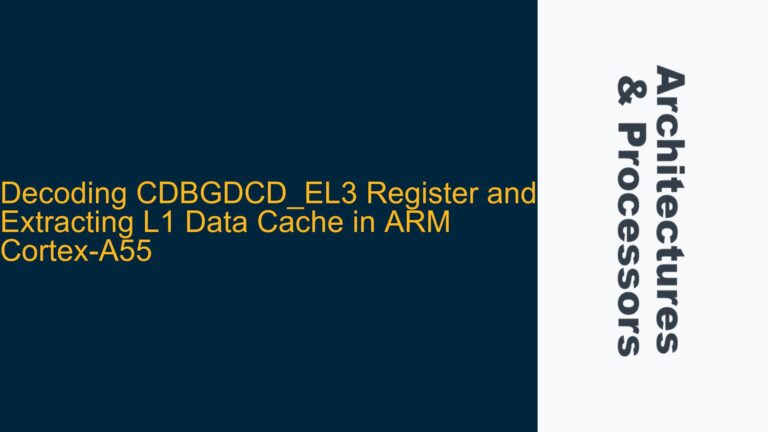ARM Cortex-R4 Dual-Core Boot Process and Core Initialization
The ARM Cortex-R4 processor, while often referred to as a dual-core architecture, is technically a single-core processor with dual execution pipelines. However, the confusion arises from its ability to handle multiple tasks in parallel, giving the impression of a dual-core system. The Cortex-R4 does not have a traditional primary and secondary core setup like true multi-core processors (e.g., Cortex-A series). Instead, it relies on a single core with advanced pipeline management and context switching capabilities to achieve high performance and real-time responsiveness.
The boot process of the Cortex-R4 is centralized around its single core, which initializes the system and prepares the execution environment. Unlike multi-core systems where one core is designated as the primary boot core and others as secondary, the Cortex-R4 does not require such a distinction. The boot sequence begins with the reset vector, which points to the initial code to be executed. This code typically includes setting up the stack, initializing memory, and configuring essential peripherals. Once the core is initialized, it can start executing the main application or operating system.
In systems where multiple Cortex-R4 processors are used (e.g., in an asymmetric multiprocessing configuration), each processor will have its own boot sequence. However, even in such cases, there is no inherent concept of a primary or secondary core within a single Cortex-R4 instance. Instead, the system designer must explicitly define the roles of each processor in the application software. This could involve designating one processor as the master responsible for system initialization and coordination, while others act as slaves handling specific tasks.
The lack of a primary-secondary core distinction in the Cortex-R4 architecture simplifies the boot process but places additional responsibility on the system designer to manage task allocation and inter-processor communication. This is particularly important in real-time systems where deterministic behavior and low latency are critical. The Cortex-R4’s dual-execution pipeline architecture allows it to handle multiple instruction streams efficiently, but it does not provide the same level of parallelism as true multi-core processors.
Misconceptions About Dual-Core Behavior in Cortex-R4
One of the primary sources of confusion regarding the Cortex-R4’s architecture is the misinterpretation of its dual-execution pipeline as a dual-core design. This misconception often leads to questions about primary and secondary cores, which are not applicable to the Cortex-R4. The Cortex-R4’s dual pipelines allow it to fetch, decode, and execute multiple instructions simultaneously, improving throughput and reducing latency. However, this is fundamentally different from having two independent cores, each with its own set of registers, execution units, and memory interfaces.
Another common misunderstanding is the assumption that the Cortex-R4 supports symmetric multiprocessing (SMP), where multiple cores share the same memory space and operate under a single operating system. The Cortex-R4 is not designed for SMP; it is optimized for real-time, deterministic performance in embedded systems. Its architecture is more suited to asymmetric multiprocessing (AMP), where each processor or pipeline handles specific tasks independently. This distinction is crucial when designing systems that require precise timing and resource management.
The absence of a primary-secondary core hierarchy in the Cortex-R4 also means that system designers must carefully manage resource allocation and task scheduling. In a true multi-core system, the operating system or firmware can dynamically assign tasks to different cores based on load and priority. In contrast, the Cortex-R4’s single-core architecture requires a more static approach, where tasks are explicitly assigned to the available pipelines. This can lead to inefficiencies if not properly managed, particularly in complex systems with varying workloads.
Furthermore, the Cortex-R4’s lack of hardware support for core-to-core communication (e.g., inter-processor interrupts or shared caches) means that any coordination between tasks must be handled through software mechanisms. This can introduce additional complexity and overhead, especially in systems with tight timing constraints. Designers must carefully consider these factors when implementing multi-tasking or multi-processing solutions on the Cortex-R4.
Managing Task Allocation and Boot Sequencing in Cortex-R4 Systems
Given the Cortex-R4’s single-core architecture, system designers must adopt specific strategies to manage task allocation and boot sequencing effectively. One common approach is to use a master-slave configuration, where one Cortex-R4 processor (or pipeline) is designated as the master responsible for system initialization and coordination, while others handle specific tasks. This can be implemented in systems with multiple Cortex-R4 processors or in single-processor systems where the dual pipelines are used to separate critical and non-critical tasks.
During the boot process, the master processor (or pipeline) initializes the system by setting up memory, configuring peripherals, and loading the necessary firmware or operating system. Once the system is initialized, the master can start assigning tasks to the slave processors (or pipelines) based on predefined criteria. This approach ensures that critical tasks are handled promptly and that system resources are used efficiently.
In single-processor systems, the dual pipelines of the Cortex-R4 can be leveraged to separate high-priority real-time tasks from lower-priority background tasks. For example, one pipeline could be dedicated to handling interrupts and time-critical operations, while the other pipeline manages less urgent tasks such as data logging or communication. This separation helps to ensure that real-time tasks are not delayed by lower-priority activities, improving overall system responsiveness.
To facilitate task allocation and coordination, system designers can use software mechanisms such as task queues, semaphores, and message passing. These mechanisms allow tasks to communicate and synchronize their activities without requiring hardware support for inter-core communication. However, designers must be mindful of the potential for contention and deadlock, particularly in systems with complex task dependencies.
Another important consideration is the management of shared resources, such as memory and peripherals. In the absence of hardware support for resource arbitration, designers must implement software-based solutions to prevent conflicts and ensure data consistency. This may involve using mutual exclusion (mutex) mechanisms or implementing custom resource management algorithms.
In summary, while the ARM Cortex-R4 does not have a traditional primary-secondary core architecture, its dual-execution pipeline design offers significant flexibility for task allocation and system management. By carefully designing the boot sequence and task allocation strategy, system designers can leverage the Cortex-R4’s capabilities to build efficient and responsive embedded systems. However, this requires a thorough understanding of the processor’s architecture and careful consideration of the trade-offs involved in software-based task management and resource allocation.






